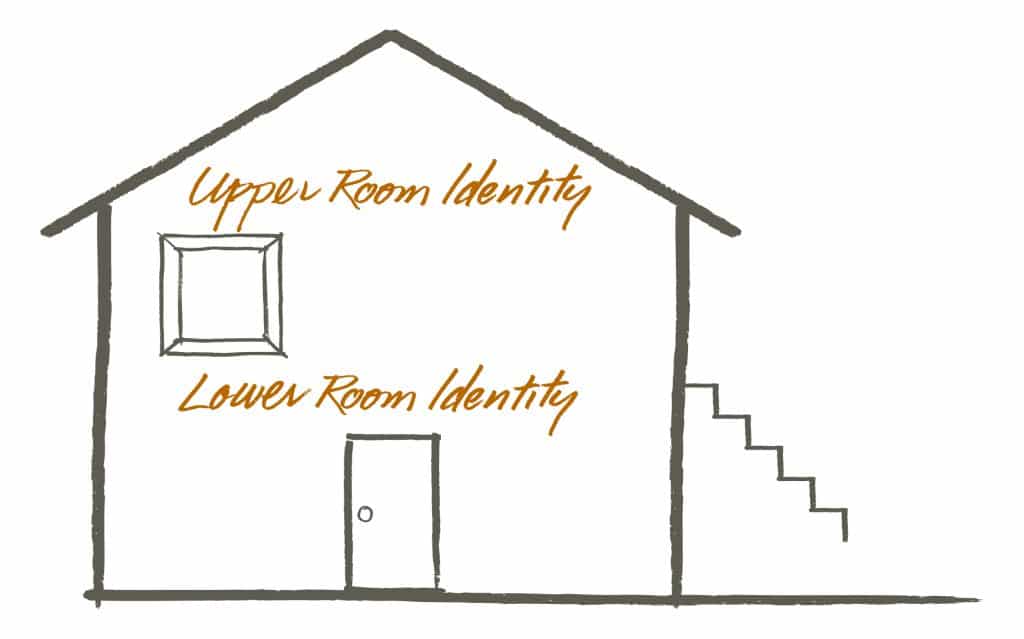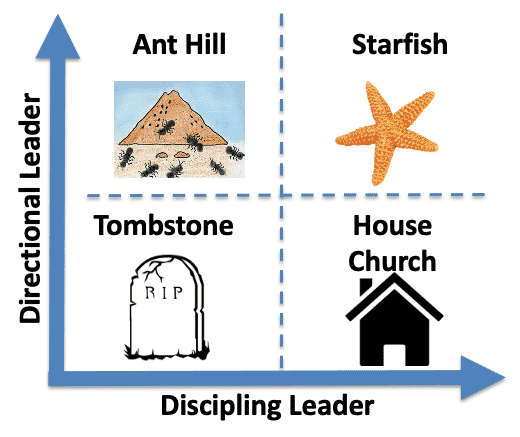
Future Church
Will Mancini has been influencing church leadership and planning for decades through his widely applicable tools such as The Vision Frame, The Horizon Storyline, and most recently through his book Future Church. Yet with all of the incredible influence and impact of his work, he began to notice something within a large minority of the leaders he has worked with. While most see tremendous improvement in their disciple-making efforts, some only have a more clear and creative way of articulating the disciple-making strategy that they are NOT doing.
Fueled by this discrepancy, Mancini discerned that the approach many have to visionary planning should begin with an understanding of a very simple house. One with two rooms. And in so doing, we’ll find the key to this future church.
Lower Room vs. Upper Room

Imagine a house with two rooms, a lower room and an upper room.
These rooms represent how people interact, get connected, and stay connected to your church. If you were to ask anyone from your church (or any church for that matter) the question ‘why do you attend our church?’ The responses you would get would generally fit into one of four categories:
The first is People.
They have friends that attend the church or their kids have friends that attend the church. So they end up sticking around because of the relationships they have with the people there. It’s the Cheers theme song, “sometimes you want to go where everybody knows your name.” They just want to spend time with their friends.
The second is Place.
They attend your church because of its physical location or the facility itself. Maybe you have an incredible Worship space or Children’s space. Or it’s simply because they don’t want to drive across town to another place. It’s the location itself. Don’t think people get connected to Place? Just bring up relocation at the next leadership meeting. You’ll find pretty quickly that place matters.
The third is Programs.
People attend your church for the stuff you offer. Maybe it’s Awanas or Celebrate Recovery. Maybe you have an incredible worship service or some mid-week Bible study. Whatever it is, people are connected to “IT” and attend your church because of whatever “IT” is.
The fourth is Personality.
People are attracted and stay because of a particular leader in your church, often the Lead Pastor or staff member. They like you. They like how you lead or how you teach, the passion that you have, or what you’ve personally done for them and their family. They’re connected to a leader.

Now, there’s nothing inherently wrong with any one of these things. You want your people to have a connection with one another and feel known when they walk in your door. You want your environment to be welcoming, inviting, and in a great location. And you desire deeply to offer great programs for people to grow deeper and be equipped. And you even want people to enjoy being around you and your staff. To feel loved and cared for.
So What’s The Problem?
The problem lies in that people tend to only stay connected to these four things. And that’s a problem because each of one them can change at any moment.
Your meeting location can change, especially starting as a church plant where you’re renting space. If someone has a friend who attends your church and all of a sudden, they quit going or relocate, they’ll end up leaving too. What do you think happens when you cut a certain ministry or program or life group? If someone came to your church because of it and was connected only to that, they’ll most likely go somewhere that has what they want. And lastly, you see waves of attendance fluctuate simply because of who is leading their ministry. What happens if the lead pastor takes a long sabbatical? Or if your staff changes? People get connected to their leaders. Change is not welcome.
Everyone who attends your church will have to start in the Lower Room. They come in through the front door into the Lower Room. You can have a great location, great people, awesome programs, and stellar leaders, but people will come and go as they change. Your job as a leader is to get your people connected to something much deeper. To move them into the Upper Room. To move them into PURPOSE.
You can have a great location, great people, awesome programs, and stellar leaders, but people will come and go as they change. Your job as a leader is to get your people connected to something much deeper.
Two Rooms, Three Churches
In his book, Future Church, Mancini takes a fascinating tour through recent church history to see what has driven most church leaders in the last 60+ years. From the post-WWII era, through the major denominational emphasis in the ’60s and ’70s, to the shift of a ‘seeker friendly’ church in the ’80s and ’90s, and finally the ‘missional reorientation’ push for many churches in the 2000s. Future Church is a look at what might take place in the next 20 years of the American church and he looks at this in light of the Upper Room and Lower Room conversation.
Lower Room Only Church
The lower room only is considered “Program Church.” Or in the Starfish Movement diagram that Nexus has used many times, this would be a “Directional Leader” only type of church. These churches are great at attracting people and they execute the Lower Room better than any other church around. The problem is, very little discipleship and actual spiritual growth is seen.

Upper Room Only Church
Conversely, the Upper Room only church (or “Discipleing Leader” in the Starfish diagram) would say, “only discipleship matters.” This is not incorrect. Hundreds of disciple-making movements all over the world are leveraging simple churches like this to reproduce and multiply. House churches are incredible expressions of the body of Christ. However, at some point, there is typically a desire to gather together for a celebration. This can lead to the ‘need’ to have some kind of Lower Room in place.
Future Church
In Future Church, Starfish Movement, and at Nexus, we believe it’s not an either/or approach. As Jim Collins would put it in Built To Last, it’s the “genius of the AND.” It’s both Lower Room AND Upper Room working together. If your leadership is focused on both Directional and Discipling leadership it can produce a Starfish Movement. It’s possible to launch a church and not make disciples. It’s possible to make disciples and never establish an organized church. But we see a need for both. The danger lies in those leaders committed to only doing program church well and assuming it will make disciples. We must teach disciples to obey the commands of Jesus and multiply to reach the nations. This is the purpose of the Upper Room.
A Deeper Connection
The purpose that you are calling them to, helps provide meaning, incites action, unlocks sacrifice, aligns perspective, and promotes true disciple-making. The vision that you craft, and begin to instill in your culture, is inspiring people to move out of the Lower Room into something much deeper. It helps to elevate your conversation from the things that change all the time to that which is unchanging.
Think of it like this: If you asked an 8-year-old boy what he wants for his life, the answers would be tangible. An electric scooter, an Xbox, a drone… But if you asked that 8-year-old boy’s parents what they want for his life, the answers would be more intangible. They want him to be loving, Christlike, selfless, successful, confident, etc.
It’s similar to how people connect with your church. When they enter and connect in the Lower Room, they’re connecting to very tangible things (People, Place, Personality, Programs). But when they elevate their connection to the Upper Room, their connection becomes much more significant as they partner with you to pursue the deeper purpose of why your church exists. They’re connecting to the heart of God, and the mission to reach the nations, starting in your community. Their connection goes WAY BEYOND the Lower Room. This type of connection withstands the sense of loss that is felt when tangible things change. In fact, it will help many see more clearly why things need to change.
So what does it take to get people to the Upper Room? What makes up the stairway to make this vision and purpose accessible?
The Answer is Language
I know… you’re unimpressed. But the truth is, words create worlds. And the language you use, the words you craft, the shared vocabulary that you design that lives inside the hearts of your leaders is what elevates the conversation and connection for everyone in your culture. How are YOU communicating the heart of the Father?
Now, vision ultimately transfers through people, not paper. But when you and your leaders talk about your church, answering fundamental questions like, What are we doing? Why are we doing it? How do we do it? When are we successful? Or where is God taking us?… You want to be saying and pursuing the same thing.
There’s a quote from renowned author and speaker, Marcus Buckingham. He says that “clarity is the preoccupation of the effective leader. If you do nothing else as a leader, be clear.” Will Mancini would echo this to church leaders by saying that “vision isn’t everything but it changes everything.”
Get people connected on a deeper, more profound, level than just attending church for some self-serving purpose. Through a clear vision to be a part of God’s larger story, you can move out of complacency and connect those around you to the Upper Room.
Check out our recent webinar with Will Mancini on Future Church.


